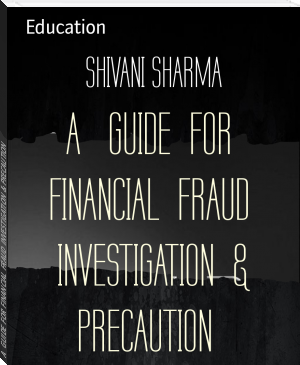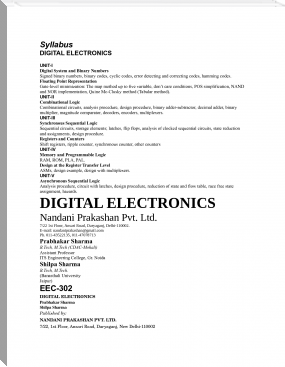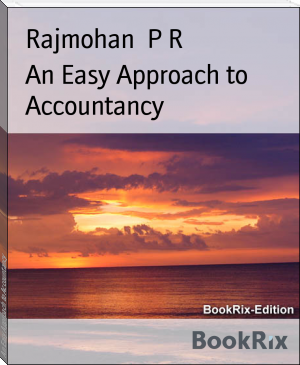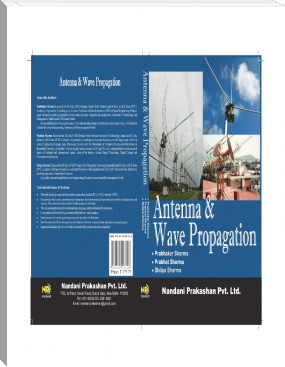A GUIDE FOR FINANCIAL FRAUD INVESTIGATION & PRECAUTION by SHIVANI SHARMA (books to read for beginners .txt) 📕

- Author: SHIVANI SHARMA
Book online «A GUIDE FOR FINANCIAL FRAUD INVESTIGATION & PRECAUTION by SHIVANI SHARMA (books to read for beginners .txt) 📕». Author SHIVANI SHARMA
The U.S. Supreme Court decision Osborne v. Ohio, 495 U.S. 103 (1990), ruled that the U.S. Constitution allowed prohibition of child pornography possession. The Court noted that at the time of the decision, 19 U.S. states had laws on their books prohibiting child pornography possession. As of 2015, all 50 U.S. states had such laws. Provisions of the Child Pornography Prevention Act of 1996 that banned virtual child pornography were struck down in Ashcroft v. Free Speech Coalition, 535 U.S. 234 (2002). Congress passed several laws increasing the penalties for child pornography offenses, so that from 1997 to 2007, the mean sentence of child pornography offenders increased from 20.59 months to 91.30 months of confinement, an increase of 443%.[79] In 2003, Congress passed the PROTECT Act, authorizing lifetime terms of federal supervised release for child pornography offenders;[80] since U.S. Sentencing Guidelines recommend imposing the maximum term of supervised release for all sex offenders,[81] this means that a lifetime term of supervised release is recommended for all child pornography offenders.
During 2006, 3,661 suspects were referred to U.S. attorneys for child sex exploitation offenses. Child pornography constituted 69% of referrals, followed by sex abuse (16%) and sex transportation (14%). In 2006, the median prison sentence imposed was greatest for sex abuse offenses (70 months) followed by child pornography (63 months) and sex transportation (60 months). The median sentenced for sex transportation was 60 months in 2006 and 1996. The median sentence increased from 44 to 70 months for sex abuse and from 15 to 63 months for child pornography. In comparison, median prison terms for drug and weapon offenders remained stable and increased for violent offenses.[82]
A bill named Internet Safety Act, intended to stop child pornography and protect children from online predators by requiring Internet service providers to keep track of data pertaining to users that were assigned a temporarily assigned network address, was introduced in 2009 but was finally not enacted.
In fiscal year 2010, the average term of supervised release for non-production offenders was approximately 20 years; the average term of supervised release for offenders sentenced under the production guideline was nearly 27 years.[83]
International coordination of law enforcement
Investigations include the 1999 Operation Cathedral which resulted in multi-national arrests and 7 convictions as well as uncovering 750,000 images with 1,200 unique identifiable faces being distributed over the web; Operation Amethyst which occurred in the Republic of Ireland; Operation Auxin which occurred in Australia; Operation Avalanche; Operation Ore based in the United Kingdom; Operation Pin; Operation Predator; the 2004 Ukrainian child pornography raids; and the 2007 international child pornography investigation.[84] A three-year Europol investigation, dubbed Operation Rescue, based on the activities of boylover.net, a popular pedophile chat room, netted over 150 arrests and the rescue of 230 children in 2011. The principal of boylover.net, Israeli-born Dutch citizen Amir Ish-Hurwitz, was jailed 17 March 2011 in the Netherlands. Hundreds of additional suspects remain at large.[85]
Even so, the UK based NSPCC said that worldwide an estimated 2% of child pornography websites still had not been removed a year after being identified.[86]
One of the primary mandates of the international policing organization Interpol is the prevention of crimes against children involving the crossing of international borders, including child pornography and all other forms of exploitation and trafficking of children.[87][88]
The USA Department of Justice coordinates programs to track and prosecute child pornography offenders across all jurisdictions, from local police departments to federal investigations, and international cooperation with other governments.[19] Efforts by the Department to combat child pornography includes the National Child Victim Identification Program, the world's largest database of child pornography, maintained by the Child Exploitation and Obscenity Section of the United States Department of Justice and the National Center for Missing and Exploited Children (NCMEC) for the purpose of identifying victims of child abuse.[89][90] Police agencies have deployed trained staff to track child pornography files and the computers used to share them as they are distributed on the Internet, and they freely share identifying information for the computers and users internationally.[91]
In Europe the CIRCAMP Law Enforcement project is aimed at reducing the availability of abusive material on the Web, combining traditional police investigative methods and Police/Internet industry cooperation by blocking access to domains containing such files. The result is country specific lists according to national legislation in the participating countries. This police initiative has a worldwide scope in its work but is partly financed by the European Commission.
When child pornography is distributed across international borders, customs agencies also participate in investigations and enforcement, such as in the 2001–2002 cooperative effort between the United States Customs Service and local operational law enforcement agencies in Russia. A search warrant issued in the USA by the Customs Service resulted in seizing of computers and email records by the Russian authorities, and arrests of the pornographers.[92]
In spite of international cooperation, less than 1 percent of children who appear in child pornography are located by law enforcement each year, according to Interpol statistics.[93]
Google announced in 2008 that it is working with NCMEC to help automate and streamline how child protection workers sift through millions of pornographic images to identify victims of abuse. Google has developed video fingerprinting technology and software to automate the review of some 13 million pornographic images and videos that analysts at the center previously had to review manually.[94]
The FBI has begun posting hyperlinks on the Internet that purport to be illegal videos of minors having sex, and then raiding the homes of anyone willing to click on them.[95]
In October 2011, hacking collective Anonymous announced they began taking down child pornography websites on the darknet in a vigilante move, and released alleged user names on a pastebin link.[96]
National and international lawMain article: Laws regarding child pornography
Child pornography laws provide severe penalties for producers and distributors in almost all societies, usually including incarceration, with shorter duration of sentences for non-commercial distribution depending on the extent and content of the material distributed. Convictions for possessing child pornography also usually include prison sentences, but those sentences are often converted to probation for first-time offenders.[8]
In 2006, the International Centre for Missing & Exploited Children (ICMEC) published a report of findings on the presence of child pornography legislation in the then-184 INTERPOL member countries. It later updated this information, in subsequent editions, to include 196 UN member countries.[97][98][99][100] The report, entitled “Child Pornography: Model Legislation & Global Review,” assesses whether national legislation:
(1) exists with specific regard to child pornography; (2) provides a definition of child pornography; (3) expressly criminalizes computer-facilitated offenses; (4) criminalizes the knowing possession of child pornography, regardless of intent to distribute; and (5) requires ISPs to report suspected child pornography to law enforcement or to some other mandated agency.[98][101][102]
ICMEC stated that it found in its initial report that only 27 countries had legislation needed to deal with child pornography offenses, while 95 countries did not have any legislation that specifically addressed child pornography, making child pornography a global issue worsened by the inadequacies of domestic legislation.[103] The 7th Edition Report found that still only 69 countries had legislation needed to deal with child pornography offenses, while 53 did not have any legislation specifically addressing the problem.[97] Over seven years of research from 2006–12, ICMEC and its Koons Family Institute on International Law and Policy report that they have worked with 100 countries that have revised or put in place new child pornography laws.[104][105][106][107]
A 2008 review of child pornography laws in 187 countries by the International Centre for Missing & Exploited Children (ICMEC) showed that 93 had no laws that specifically addressed child pornography. Of the 94 that did, 36 did not criminalize possession of child pornography regardless of intent to distribute.[108] This review, however, did not count legislation outlawing all pornography as being "specific" to child pornography. It also did not count bans on "the worst forms of child labor."[27] Some societies such as Canada and Australia have laws banning cartoon, manga, or written child pornography and others require ISPs (Internet Service Providers) to monitor internet traffic to detect it.[109][110][111]
The United Nations Optional Protocol on the Sale of Children, Child Prostitution and Child Pornography requires parties to outlaw the "producing, distributing, disseminating, importing, exporting, offering, selling or possessing for the above purposes" of child pornography.[112] The Council of Europe's Cybercrime Convention and the EU Framework Decision that became active in 2006 require signatory or member states to criminalize all aspects of child pornography.[8] Article 34 of the United Nations Convention on the Rights of the Child (UNCRC) stated that all signatories shall take appropriate measures to prevent the exploitative use of children in pornographic performances and materials.
Artificially generated or simulated imageryMain article: Simulated child pornography
Simulated child pornography produced without the direct involvement of children in the production process itself includes modified photographs of real children, non-minor teenagers made to look younger (age regression), fully computer-generated imagery,[113] and adults made to look like children.[114] Drawings or animations





Comments (0)